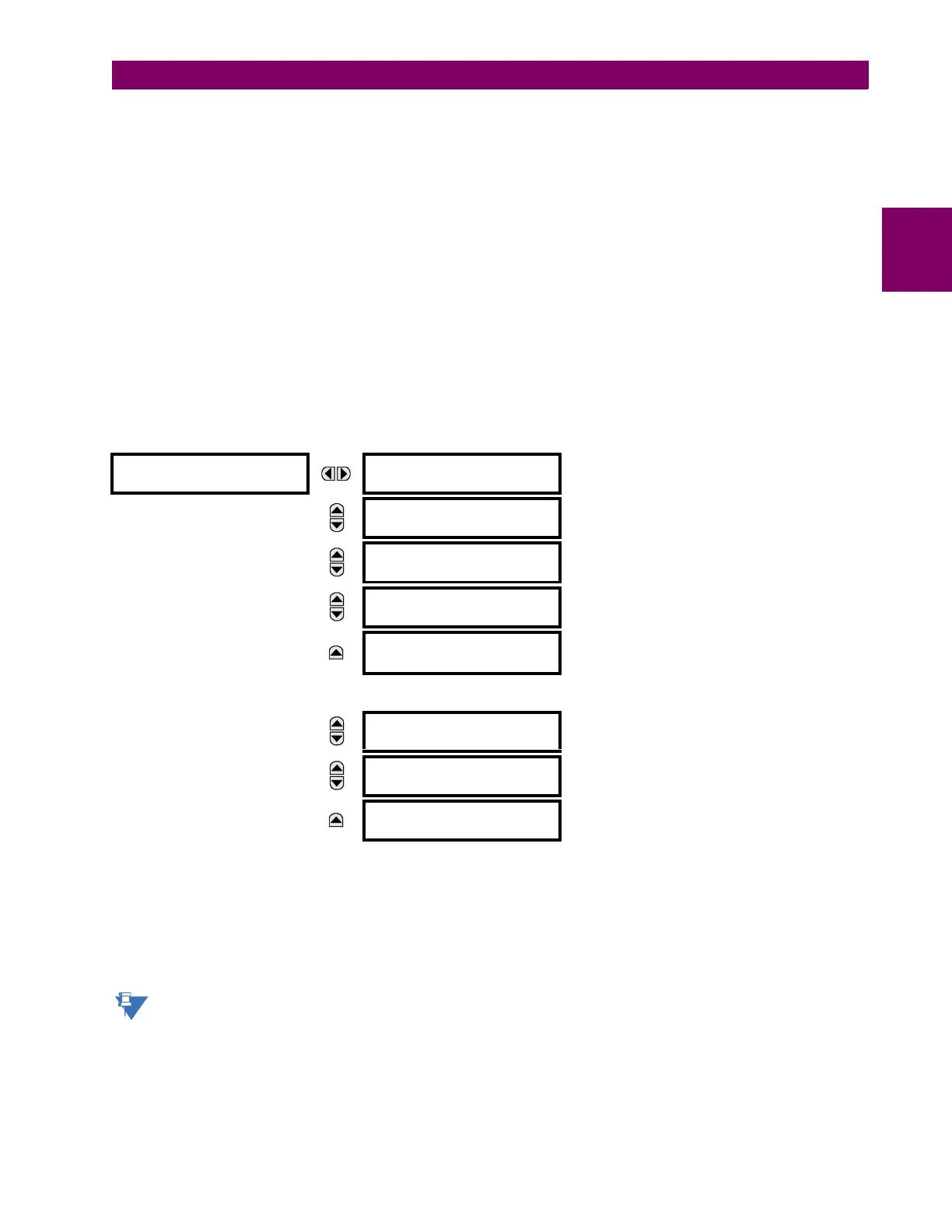GE Multilin T60 Transformer Protection System 5-67
5 SETTINGS 5.2 PRODUCT SETUP
5
the relay to track the first source named that is enabled and operational, or free-run if none of these are available. Here, PP
means a time source that is strictly compliant with PP, and PTP means a time source that is not strictly compliant with PP.
When a time source fails or recovers, the relay automatically transfers synchronization as required by this setting.
The UR clock is updated by all sources active in the device. This means that whenever a time synchronization message is
received through any of the active protocols, the UR clock updates. However, given that IEC 60870-5-103, IEC 60870-5-
104, Modbus, and DNP are low accuracy time synchronization methods, avoid their use for synchronization when better
accuracy time protocols, such as IRIG-B, PTP, and SNTP, are active in the system.
See the
COMMANDS SET DATE AND TIME menu section of this manual to manually set the RTC.
The REAL TIME CLOCK EVENTS setting allows changes to the date and/or time to be captured in the event record. The event
records the RTC time before the adjustment.
To enable IRIG-B synchronization, the input IRIG-B SIGNAL TYPE must be set to DC Shift or Amplitude Modulated. IRIG-B
synchronization can be disabled by making this setting None.
To configure and enable PTP and/or SNTP, or to set local time parameters (for example time zone, daylight savings), use
the following sections.
b) PRECISION TIME PROTOCOL (1588)
PATH: SETTINGS PRODUCT SETUP REAL TIME CLOCK PRECISION TIME PROTOCOL (1588)
PATH: SETTINGS PRODUCT SETUP REAL TIME CLOCK PRECISION TIME PROTOCOL (1588) PTP PORT 1(3)
The UR supports the Precision Time Protocol (PTP) specified in IEEE Std 1588 2008 using the Power Profile (PP) specified
in IEEE Std C37.238 2011. This enables the relay to synchronize to the international time standard over an Ethernet net-
work that implements PP.
The relay can be configured to operate on some PTP networks that are not strictly PP. Time accuracy can be less than
specified for a PP network. Tolerated deviations from strict PP include 1) missing declaration of PP compliance in the mes-
sages, 2) connection to a network device that does not support the PTP peer delay mechanism, 3) jitter substantially
greater than 1 µs in received event messages, and 4) certain non-compliant announce and sync message update rates.
The relay implements PTP according to IEEE Std 1588 2008 and the equivalent IEC 61588:2009(E), sometimes
referred to as version 2 PTP. It does not support the previous version of the standard (version 1).
PTP is a protocol that allows multiple clocks in a network to synchronize with one another. It permits synchronization accu-
racies better than 1 ns, but this requires each and every component in the network achieve very high levels of accuracy and
a very high baud rate, faster than normally used for relay communications. When operating over a generic Ethernet net-
PRECISION TIME
PROTOCOL (1588)
STRICT POWER PROFILE:
Disabled
Range: Enabled, Disabled
MESSAGE
PTP DOMAIN NUMBER
0
Range: 0 to 255
MESSAGE
PTP VLAN PRIORITY
4
Range: 0 to 7
MESSAGE
PTP VLAN ID
0
Range: 0 to 4095
MESSAGE
PTP PORT 1
MESSAGE
PORT 1 PTP FUNCTION:
Disabled
Range: Enabled, Disabled
MESSAGE
PORT 1 PATH DELAY
ADDER: 00000 ns
Range: 0 to 60 000 ns in steps of 1
MESSAGE
PORT 1 PATH DELAY
ASYMMETRY: 0000 ns
Range: –1 000 to +1 000 ns in steps of 1
